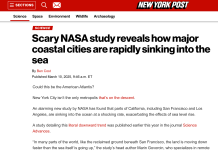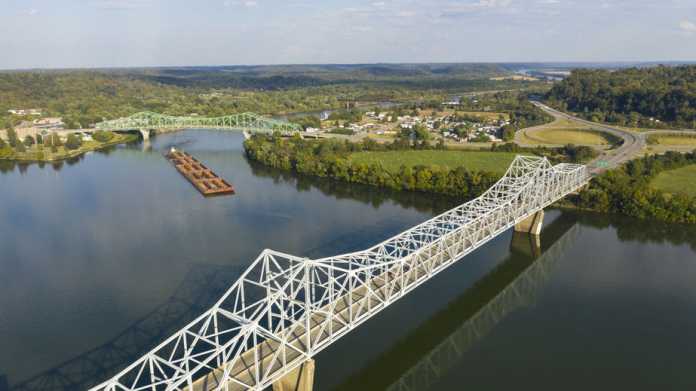A story from WFPL 89.3 in Louisville, Kentucky, claims climate change is increasing the flood risks for residents and business in the Ohio Valley.
This is false. Data from the United Nations Intergovernmental Panel on Climate Change (IPCC) and the U.S. National Oceanic and Atmospheric Administration (NOAA) show no increase in the frequency or severity of flooding in the United States or globally, so it can’t have worsened flooding in the Ohio Valley.
The evidence indicates, if anything is increasing the risk of flooding, it is the choices people are making about where to live and conduct business, not climate change.
WFPL’s article titled, “Climate Change Increases Flooding Risk For Some 230,000 Ohio Valley Homes,” says climate change is causing an increase in the number and severity of floods in the Ohio valley.
“A new analysis of flooding risk that accounts for the effects of climate change finds many more homes in Appalachian communities in Kentucky, Ohio and West Virginia are at risk of flooding than the federal government’s emergency managers have indicated,” writes WFPL, citing a report from the First Street Foundation. Real-world data refutes this claim.
As documented in Climate at a Glance: Floods, the IPCC reports “low confidence” that climate change has had any impact on floods. IPCC even acknowledges that climate change is as likely to have reduced flooding frequency and severity as it has been to make floods more common.
A study the possible impact of climate impact on flooding across the United States and Europe, published in the Journal of Hydrology, Volume 552, September 2017, Pages 704-717, found:
The number of significant trends was about the number expected due to chance alone. …
Changes in the frequency of major floods are dominated by multidecadal variability.
The Intergovernmental Panel on Climate Change (IPCC) concluded (Hartmann et al., 2013) that globally there is no clear and widespread evidence of changes in flood magnitude or frequency in observed flood records.
The results of this study, for North America and Europe, provide a firmer foundation and support the conclusion of the IPCC that compelling evidence for increased flooding at a global scale is lacking.’
As discussed in Climate Realism articles, here, here, and here, for example, to the extent costs associated with flooding have increased it is due to human alterations to the natural courses of rivers and streams – as well as people building more, more expensive, infrastructure in natural floodplains – which can increase flooding events for reasons wholly unrelated to climate change.
History shows the Ohio Valley is prone to periodic, sometimes disastrous, floods. Peoples’ decisions about how and what to develop in historic flood plains, and government policies subsidizing or encouraging poor planning decisions are increasing the costs of flooding. The evidence shows, climate change is not increasing flooding. If WFPL reported these facts, instead of blaming flooding on climate change, people and governments might make better planning decisions.


















It’s the same thing that’s fueling the claims that hurricanes have become more damaging and destructive ‘because of climate change’, and nothing is ever said about the simple fact that a Category 3 hurricane that came ashore ten years ago and ripped through thousands of acres of coastal forest is going to do much less damage in dollars than a Category 3 hurricane that comes ashore today in exactly the same spot and rips through thousands of acres of suburban housing development.